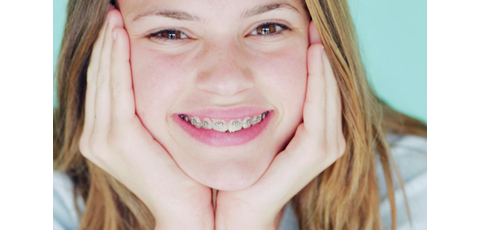Orthodontics is a branch of dentistry that deals with the treatment and study of malocclusions (improper bites). It deals in the diagnosis, prevention and treatment and problems that occur in the alignment of the teeth and jaws.
Orthodontic treatments are used to correctly align teeth that are suffering from a number of conditions that cause improper bites.
Different types of malocclusions
• Under bite: The lower jaw is aligned in front of the upper jaw which makes the lower front teeth protrude in front of the upper teeth. This can cause uneven wear of the patient’s teeth and can also cause jaw joint problems.
• Deep bite: The front teeth bite deeply over the lower front teeth. Sometimes the upper teeth can cover the lower teeth completely. Possible causes are missing lower teeth, small lower jaw and large top jaw.
• Open bite: This is when there is a gap between the upper and lower teeth thus the opposing upper and lower teeth don’t meet. This can cause eating and speech problems.
• Crowded teeth: Occurs when the jaw lacks the space for all the teeth to naturally fit. Can be difficult to clean which can cause bad oral hygiene and also prone to uneven wear. May be necessary to extract some teeth to create space for teeth to align.
• Spaced teeth: The opposite of crowded teeth. One reason for them occurring can be missing teeth, teeth not erupting correctly, teeth in the wrong place and teeth that are too small for the jawbone. Problems that can occur from spaced teeth include incorrect function, teeth deterioration and can even leave the gums susceptible to disease.
• Protruded teeth: Arises when the upper jaw protrudes past the lower jaw. This can leave the top teeth susceptible to accidental damage due to the exposure. Teeth can also wear unevenly.
• Cross bite: When the upper teeth bite inside the lower teeth it is referred to as a cross bite. It can occur at the sides of the mouth or at the front. Problems that can arise include eating difficulties, uneven wear on the teeth as well as jaw joint strain.
• Impacted teeth: When a tooth doesn’t have the sufficient space to erupt (sprout into the mouth) it is known as an impacted tooth. This can damage the tooth that it is stuck against.
• Missing teeth: Around one in fifty people have at least one missing tooth. Some people are unfortunate and have more than one missing tooth. When teeth are missing there will be a gap left which allows adjacent teeth to drift into the wrong position. Other times another tooth may impact due to there being no guidance from the missing tooth.
Orthodontic treatments
There are many treatments now available in the field of orthodontics to correct the above predicaments. Whether braces, removable appliances or the use of Invisalign (invisible braces).
If you are thinking of seeing an orthodontist to have a consultation on your situation, click here to find one in your area.
Find an Orthodontist
Here is a video from the team at Invisalign which gives some examples of the malocclusions that we mentioned above.

